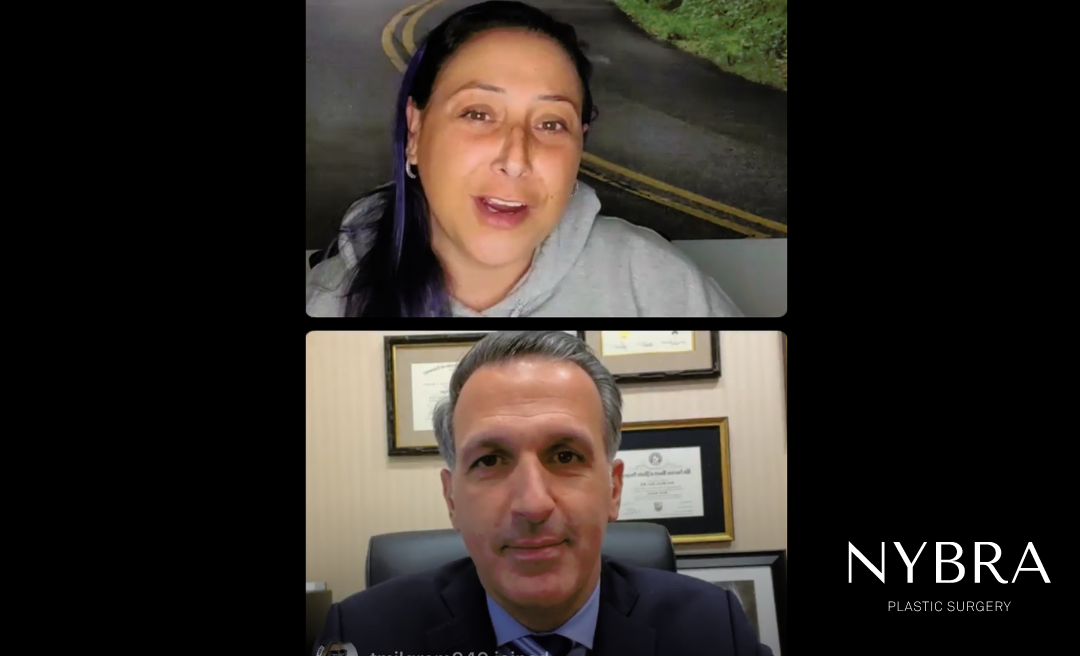Dr. David Light Answers Your Breast Reconstruction Questions with BRCAStrong
January 28, 2022
Dr. David Light joined BRCAStrong founder Tracy Posner for a community-driven Instagram live that focused on questions from individuals who joined the stream. The conversation covered a wide variety of topics, from general procedure selection to implant movement to intraoperative decisions on issues like expander-implants.
Read on for a few highlights, or watch the whole session below!
Do you need to have an expander for a DIEP flap?
“Usually we go directly to a DIEP flap. There are some situations in which we put an expander in first, and one of those is radiation. You can radiate a DIEP flap, but it sometimes causes tissue loss,” Dr. Light said.
He explained that allowing an expander-implant to be radiated instead of the flap itself can help prevent that tissue loss. Patients who choose this route spend several months healing from the radiation. Then, their surgeon can go in and do the DIEP flap.This approach protects the blood supply from the DIEP flap and keeps the reconstruction soft. The healthy, underlying flap tissue can also help radiated skin heal.
Does insurance cover a second breast reconstruction if I’m not happy with the first one?
Yes. Health insurance is required to cover all breast reconstruction procedures ad infinitum, per the Women’s Health and Cancer Act of 1998. Whether a patient is diagnosed with cancer or a gene mutation is identified, that piece of information becomes part of their insurance coding for life. Not only are revision procedures covered by insurance, they are common.
“We run into this quite a bit. We have patients both locally and nationally that may have had issues with their first reconstruction,” Dr. Light said.
When it comes to implant reconstruction, which is better: over-the-muscle or under-the-muscle?
“You have to assess individually, and it’s a decision that doctor and patient make together,” Dr. Light said.
That decision comes down to a personal understanding of the pros and cons of each implant position. For example, placing the implant under the muscle hides the implant, making it more natural-looking. However, it can cause implant animation, a deformity that occurs during certain types of movement and exercise, like rowing.
“The gym is unique in that you’re usually doing exercises that have repetition,” Dr. Light explained.
That repetition can make implant animation more noticeable or uncomfortable for patients. Placing the implant on top of the muscle avoids that animation, however, in some cases this means that the implant is visible through the skin. Some over-the-muscle patients have visible rippling, depending on the thickness of their skin.
According to Dr. Light, in many cases, patients base their decision on what they would most like to avoid.
Is a backwards implant common?
Put simply: “Implants can flip. Most plastic surgeons these days are using smooth, round implants, because of the BIA ALCL associated with textured implants. Smooth round implants can flip.”
Dr. Light said that while it is not necessarily frequent overall, implant flipping is most common in patients who sleep on their side. The good news is that a surgeon can often reposition the implant manually in the office. If it becomes a recurring issue, the implant pocket can be tightened as part of a surgical procedure.
View this post on Instagram
A Quilter Brings Her Skills to NYBRA Patient Empowerment
“I believe I’ve made over 1,000 pillows. I also made over 1,000 masks for everyone,” Dr. Ron Israeli’s patient, Charlotte, said. Charlotte had noticed some…
